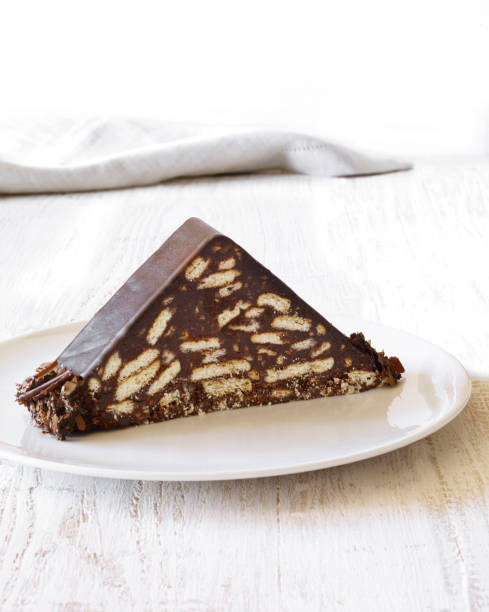Peppermint Christmas Tree: A Festive Holiday Treat Guide
The holiday season brings an array of delightful traditions, and one of the most visually captivating and deliciously festive concepts is the peppermint Christmas tree. This whimsical creation not only captures the spirit of the holidays with its vibrant colors and unmistakable flavor but also serves as a creative centerpiece that can enhance any celebration. From simple cookie designs to elaborate cake constructions, the peppermint Christmas tree has come to symbolize the joy and warmth of the season.
As the festive atmosphere envelops our homes, the importance of creative holiday desserts and decorations cannot be overstated. They add a personal touch to gatherings, elevate the dining experience, and spark memories that last a lifetime. A peppermint Christmas tree epitomizes this celebration, offering a blend of aesthetics and flavor that can be enjoyed by all ages. It invites family and friends to come together, whether it’s through crafting or sharing treats, making it a perfect project for the season.
This article will explore the rich history of peppermint in Christmas traditions, delve into what constitutes a peppermint Christmas tree, and provide step-by-step guidance on how to create one for your festive festivities. Additionally, we will cover the benefits of crafting these delightful trees, from enhancing your holiday décor to creating lasting family memories. Get ready to discover the charm of peppermint and how it can transform your holiday celebrations!

1. History of Peppermint in Christmas Traditions
Peppermint has a rich history that stretches back to ancient cultures, where it was revered not just for its distinctive flavor but also for its medicinal properties. The Peppermint plant (Mentha × piperita) is believed to have originated in Europe and the Mediterranean region. Ancient Egyptians were known to use peppermint in their rituals and for purposes of fragrance. In Rome, peppermint was commonly used as a seasoning, and it played a role in various festivals. Over the centuries, it has transformed from a useful herb to an essential component in holiday celebrations, particularly during Christmas.
As peppermint began to be cultivated in different regions, its significance grew, eventually aligning with festive occasions. The practice of candy-making became prevalent in the 19th century, with peppermint-flavored candies becoming particularly popular. This transition marked the beginning of peppermint’s cherished status during the holiday season, as families began incorporating these sweet confections into their celebrations, from stockings hung by the fireplace to elaborate dessert spreads at gatherings.
2. What is a Peppermint Christmas Tree?
A peppermint Christmas tree is a charming creation that embodies the festive spirit of the holiday season. It can take various forms, serving as either a dessert or a decorative item for holiday displays. At its core, a peppermint Christmas tree can be crafted from items like cookies, cakes, or even candies arranged in the shape of a Christmas tree. The delightful flavors and vibrant colors pull together an inviting atmosphere, making it the centerpiece of any festive gathering.
There are numerous ways to construct a peppermint Christmas tree, each offering a unique twist on the theme. For instance, some families choose to create a cookie tree made of stacked gingerbread or sugar cookies layered with peppermint frosting and decorations. Others might prefer a more decadent version made from peppermint bark or a towering cake shaped like a tree. Additionally, decorative trees can be fashioned from wrapped candies or foam cones adorned with peppermint pieces, showcasing an array of styles that appeal to both those who favor edible treats and those looking for a striking visual for their holiday decor.

3. Benefits of Making a Peppermint Christmas Tree
Creating a peppermint Christmas tree offers numerous benefits that extend beyond just a delightful dessert. It serves as a fantastic way to infuse your holiday celebrations with creativity and joy. Not only does it provide a visually stunning centerpiece for gatherings, but it also allows friends and family to engage in the holiday spirit.
3.1 Festive Decor
A peppermint Christmas tree instantly elevates any holiday setting. Its vibrant colors and whimsical design can bring warmth and charm to your home, making it feel inviting and festive. By incorporating one of these trees into your décor, you’re ensuring that your celebrations are filled with joy and cheer.
3.2 Interactive Activity
Crafting a peppermint Christmas tree is an enjoyable experience that can be cherished by families and kids alike. This interactive activity provides an opportunity for everyone to get creative, bonding over the process of decorating and assembling. The laughter and excitement generated while creating these delightful treats can become treasured memories in the years to come.
4. Ingredients and Required Materials
4.1 Ingredients for Edible Peppermint Tree
- 2 cups all-purpose flour
- 1 cup granulated sugar
- ½ cup unsalted butter, softened
- 1 large egg
- 2 teaspoons peppermint extract
- 1 teaspoon vanilla extract
- 1 teaspoon baking powder
- 1 cup powdered sugar (for icing)
- Decorative peppermint candies
- Sprinkles or edible glitter (optional)
4.2 Materials for Decorative Peppermint Tree
- Foam cone (various sizes)
- Wrapped peppermint candies (like candy canes and hard candies)
- Hot glue gun and glue sticks
- Ribbons or decorative trims
- Scissors
- Optional: fairy lights for added sparkle
5. How to Make a Peppermint Christmas Tree (Detailed Recipe)
5.1 Preparation
Before diving into the recipe, gather the necessary equipment, which includes a mixing bowl, baking sheet, piping bags, and a foam cone (if making a decorative tree). Preheat your oven to 350°F (175°C) if you are baking cookies for the tree.
5.2 Ingredients
For this particular recipe, you will use the previously mentioned ingredients to create a delicious peppermint bark tree. Adjust quantities as needed depending on the size of your tree.
5.3 Directions
- Prepare the base: If you are using a foam cone for a decorative version, secure it on a sturdy base like a plate.
- Bake cookies: If making an edible version, mix flour, sugar, and softened butter in a large bowl. Add egg, peppermint extract, vanilla extract, and baking powder. Mix until dough forms. Roll dough to desired thickness and cut into tree shapes. Bake for 8-10 minutes until golden.
- Decorate the tree: Once the cookies have cooled, use icing to adhere overlapping layers of cookies or peppermint bark onto your base. For a decorative tree, glue wrapped candies onto the foam cone in a staggered pattern.
- Assemble and arrange: Continue layering or stacking until your tree reaches the desired height. Add finishing touches like sprinkles or edible glitter for some sparkle.
5.4 Serving Suggestions
Presentation tips: Display your peppermint Christmas tree on a festive platter, garnished with additional candies or sprigs of holiday greenery around the base. Serve alongside a warm cup of hot cocoa or festive drinks to complete the holiday atmosphere.
6. Decorating Tips and Techniques
6.1 Creative Decorating Ideas
Enhance your peppermint Christmas tree by incorporating non-edible decorations. Consider using:
- Edible glitter or shimmery dust for an eye-catching effect.
- Ribbons in festive colors to wrap around the base.
- Battery-operated fairy lights interwoven through the tree for a magical touch.
6.2 Safety Tips
When crafting with children, it’s essential to keep safety in mind. Here are some recommendations:
- Supervise children closely, especially around hot glue guns and kitchens.
- Ensure that any sharp tools or hot surfaces are out of reach or used only under adult supervision.
- Choose ingredients and decorations that are safe for consumption if children are involved in eating the final product.
7. FAQs
7.1 What is a peppermint Christmas tree made of?
A peppermint Christmas tree can be made from cookies, cakes, or an arrangement of candies, often decorated with icing and sprinkles.
7.2 How do you store a peppermint Christmas tree?
Edible trees can be stored in an airtight container at room temperature, while decorative trees can be kept on display or stored in a cool, dry place.
7.3 Can I make a peppermint tree in advance?
Yes, you can prepare the base and decorations ahead of time and assemble the tree closer to your festive gathering for best presentation.
7.4 What flavors can I combine with peppermint for my tree?
Flavors such as chocolate, vanilla, and almond pair beautifully with peppermint, enhancing the overall taste of your tree.
7.5 Are there any allergy concerns?
Common allergens in peppermint recipes include nuts, gluten, and dairy. Always check ingredient labels and communicate any allergies to guests.
7.6 Can I make a vegan peppermint Christmas tree?
Yes, substitute eggs with flaxseed meal or applesauce, and replace dairy products with plant-based alternatives for a vegan-friendly option.
Conclusion
The peppermint Christmas tree not only adds a festive touch to your holiday celebrations but also creates opportunities for fun and creativity in your kitchen. Embrace this delightful tradition and make your own peppermint masterpiece this holiday season!

peppermint christmas tree
Equipment
- 1 mixing bowl
- 1 baking sheet
- 1 parchment paper
- 1 cookie cutter (tree shape)
- 1 cooling rack
- 1 small bowl
- 1 whisk
- 1 spatula
- 1 decorative piping bag (optional)
Ingredients
- 2 cups all-purpose flour
- 1 cup unsweetened cocoa powder
- 1/2 teaspoon baking powder
- 1/4 teaspoon salt
- 1/2 cup unsalted butter, softened
- 1 cup granulated sugar
- 1 large egg
- 1 teaspoon vanilla extract
- 1 teaspoon peppermint extract
- 1 cup crushed peppermint candies Plus extra for decoration.
- 2 cups powdered sugar
- 2 tablespoons milk
- 1 drop green food coloring Optional.
Instructions
- Preheat your oven to 350°F (175°C) and line a baking sheet with parchment paper.
- In a mixing bowl, whisk together the all-purpose flour, cocoa powder, baking powder, and salt. Set this dry mixture aside.
- In a separate bowl, cream together the softened butter and granulated sugar until light and fluffy, about 3-4 minutes.
- Add the egg, vanilla extract, and peppermint extract to the butter and sugar mixture, mixing until combined.
- Gradually add the dry mixture to the wet mixture, mixing until a dough forms. Fold in the crushed peppermint candies.
- Roll out the dough to about 1/4 inch thick and use a tree-shaped cookie cutter to cut out tree shapes. Re-roll any scraps until all dough is used.
- Place the cookie trees on the prepared baking sheet, leaving space between them. Bake for 10-15 minutes or until set.
- Let the cookies cool completely on a cooling rack.
- In a small bowl, mix together the powdered sugar, milk, and green food coloring (if using) to create frosting. Adjust consistency with more powdered sugar or milk as needed.
- Once the cookie trees are cool, decorate them with the frosting using a piping bag, and sprinkle additional crushed peppermint on top.
- Allow the decoration to set before serving.







